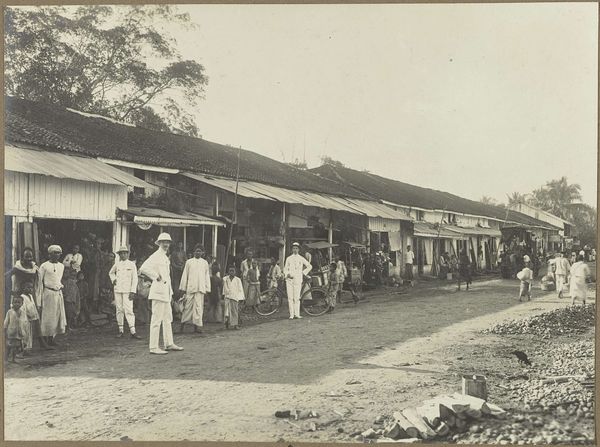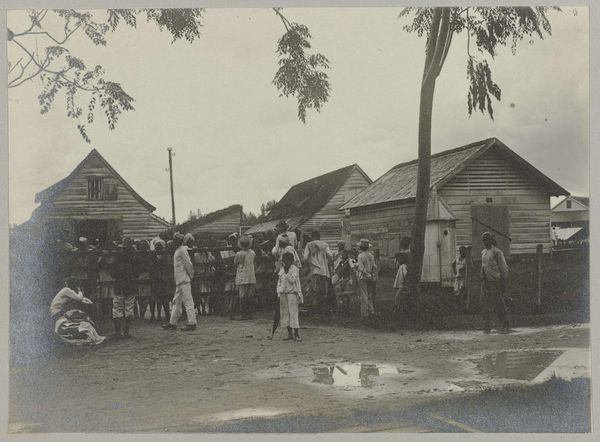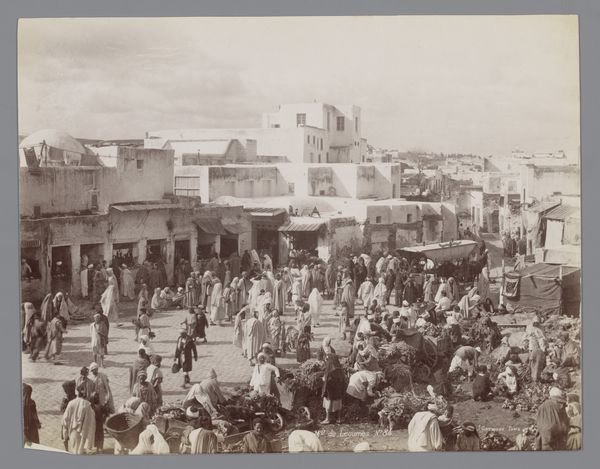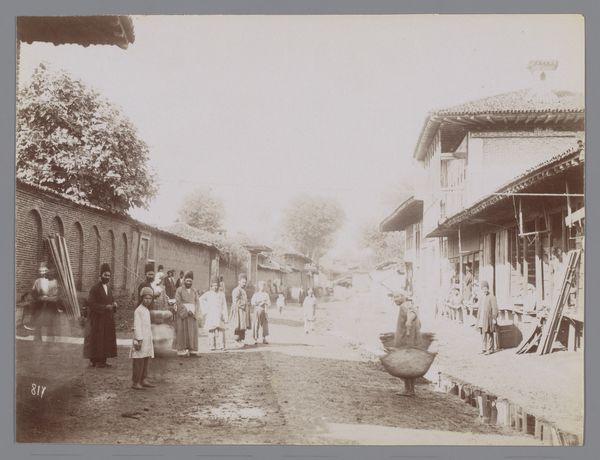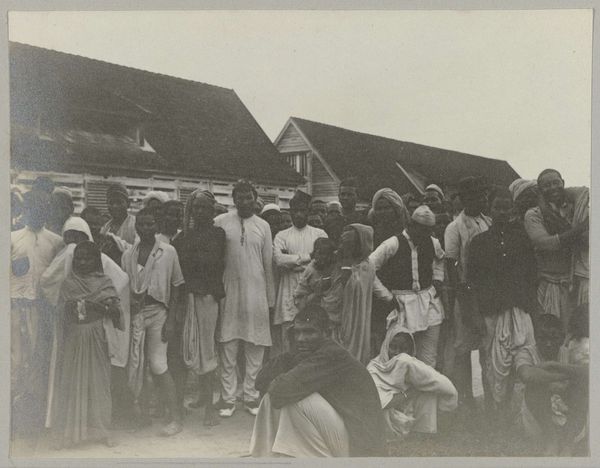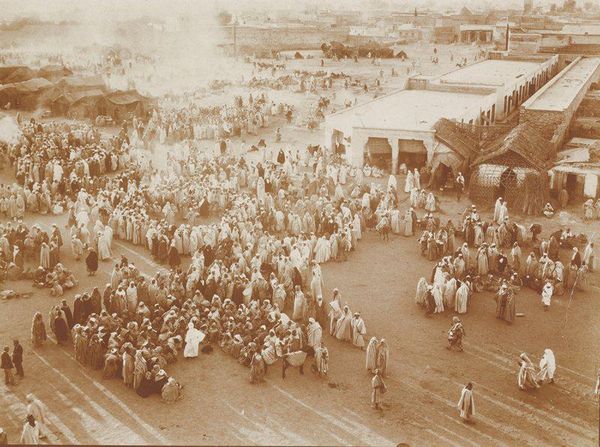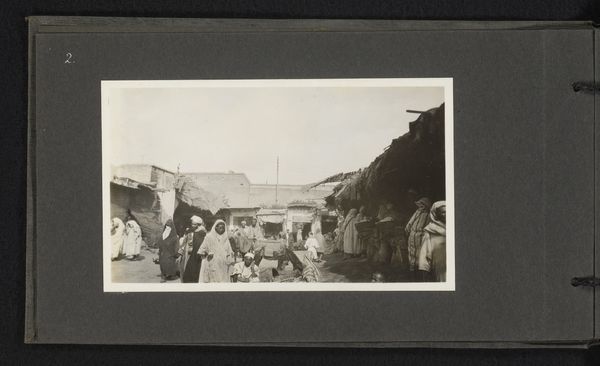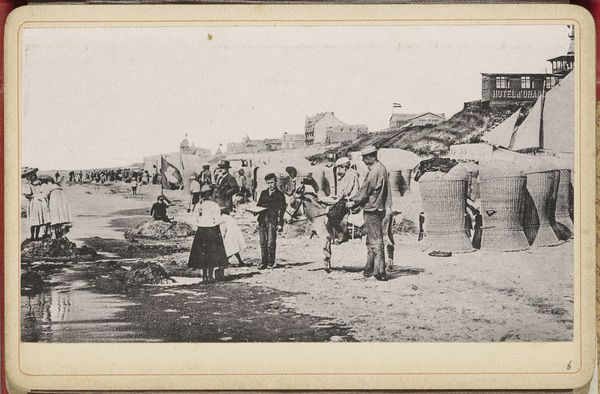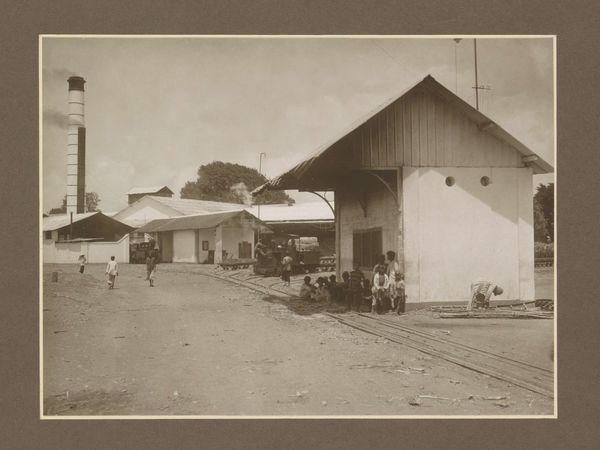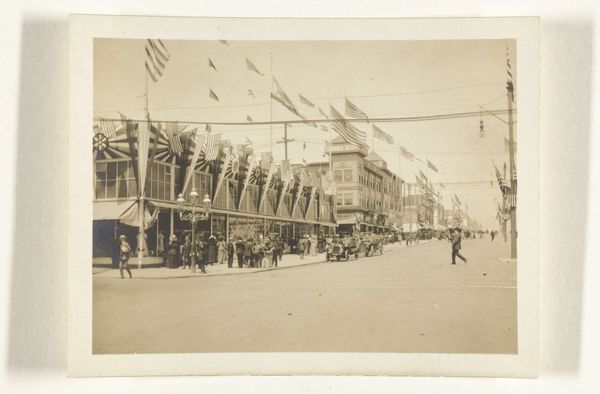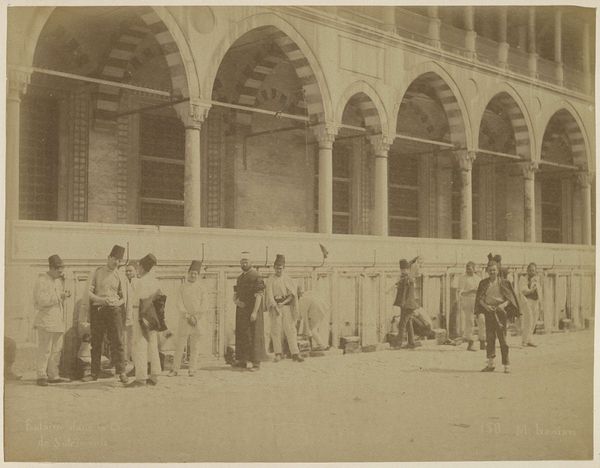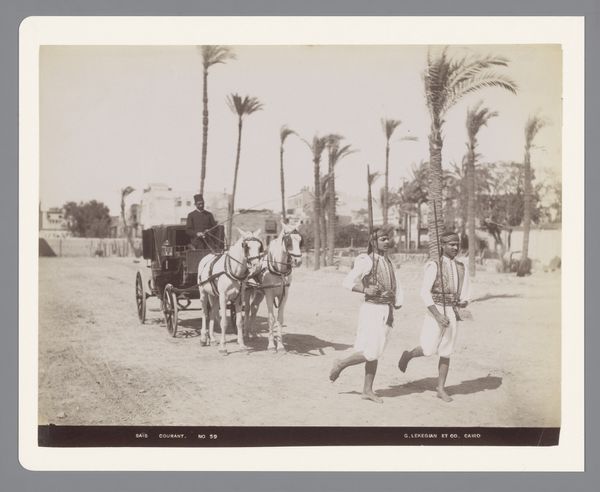
photography, gelatin-silver-print
#
portrait
#
african-art
#
landscape
#
archive photography
#
street-photography
#
photography
#
historical photography
#
historical fashion
#
gelatin-silver-print
#
cityscape
#
genre-painting
Dimensions: height 82 mm, width 107 mm
Copyright: Rijks Museum: Open Domain
Curator: Here we have an intriguing gelatin-silver print entitled "Treinstation in Suriname," dating roughly from 1925 to 1927, by an anonymous photographer. Editor: My first thought is heat, honestly. A bone-dry, shimmering heat radiates off this image. The figures almost seem to melt into the bleached landscape. It's visually very striking. Curator: Indeed. The tonal range of the gelatin silver process contributes significantly to this impression. The photographer masterfully uses the grayscale to articulate the forms, note how the long horizontal of the train station roof contrasts with the verticality of the utility poles. Editor: It's interesting that you focus on the architecture because what captures me most are the people, each of them has a different purpose or narrative. Some carry baskets, others are in deep conversation... that cute dog just walking through, it gives such a strong impression of ordinary life happening, like a slice of life almost stolen from time. Curator: From a formalist viewpoint, consider how the repetition of shapes and forms – the baskets, the heads wrapped in cloth, create a rhythmic pattern. This ordered disorder lends to the documentary feeling alongside the artistic one. The strong linear perspective, converging towards a vanishing point in the distance, further structures the visual field and creates the illusion of depth. Editor: To me the perspective creates movement rather than just depth. This isn’t some static portrait, it is a place where people arrive and then are whisked away. Also, in terms of rhythm and pattern, the various hues and tones of clothing makes me reflect upon tradition and style. They're echoes of identity captured in shades of gray. Curator: It raises interesting questions about the role of photography during the colonial era and its engagement with recording or shaping perceptions of place and people. It is clearly staged but tries to be a document. Editor: Yes! In the end, that's what keeps my interest. It is suspended, a moment. It makes me feel connected and grounded to history. I wish I knew more of the stories of these people. Curator: The image’s structural elegance, while not as rich as it could be in terms of color and texture, offers plenty to admire with our 21st-century perspectives and critical habits. Editor: I think what draws me back again and again to this photograph, is the people that made Suriname unique during that time.
Comments
No comments
Be the first to comment and join the conversation on the ultimate creative platform.

